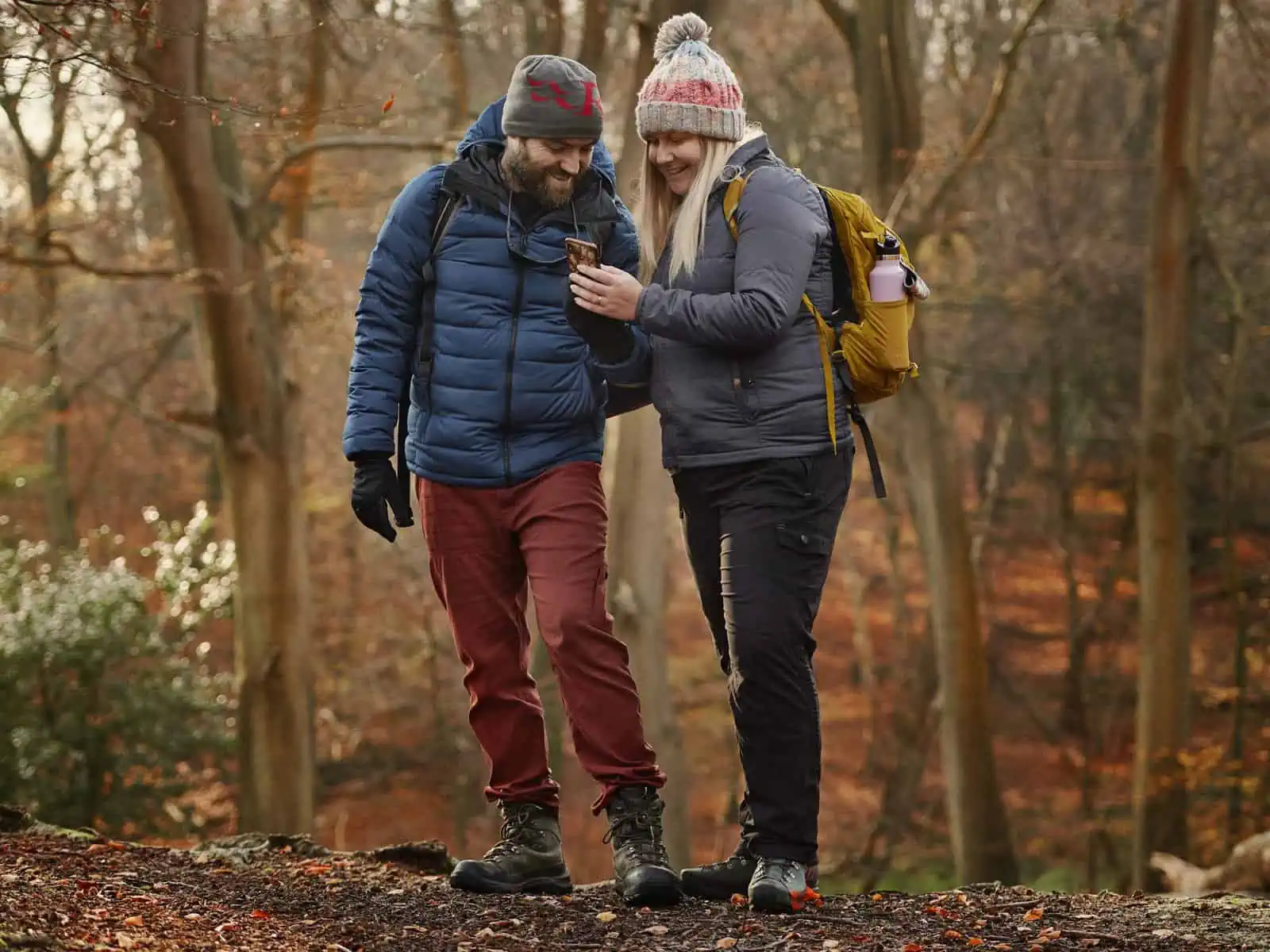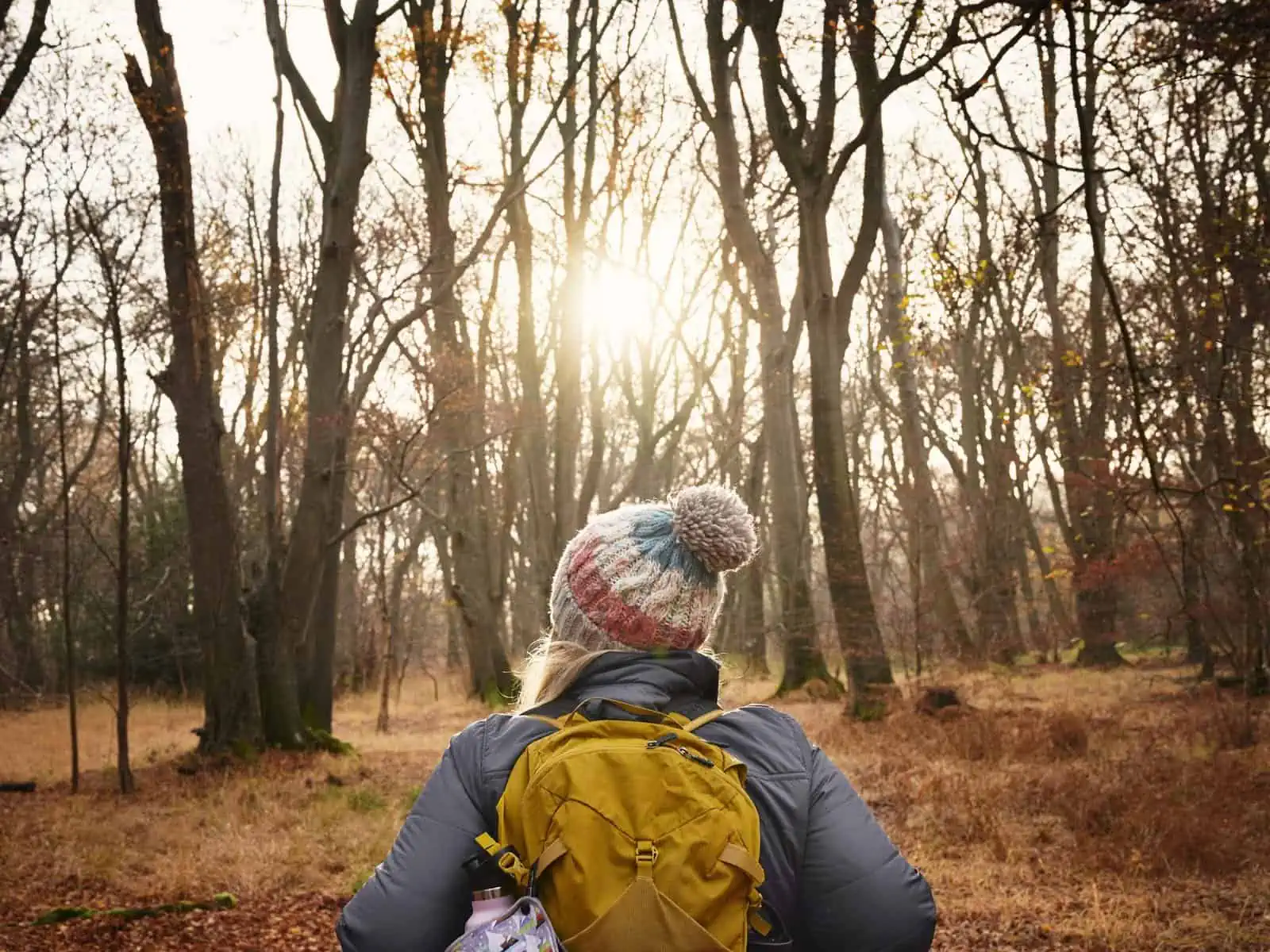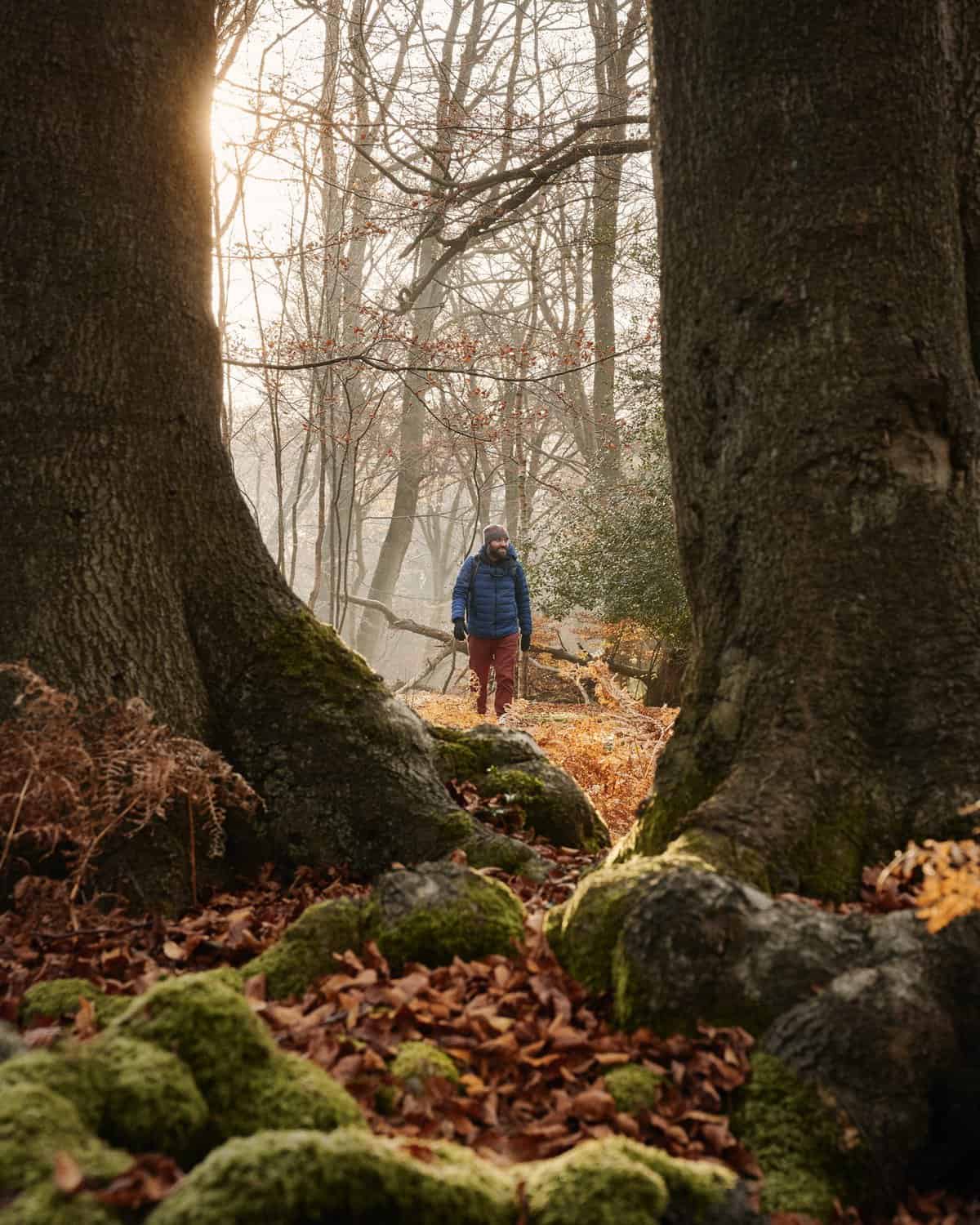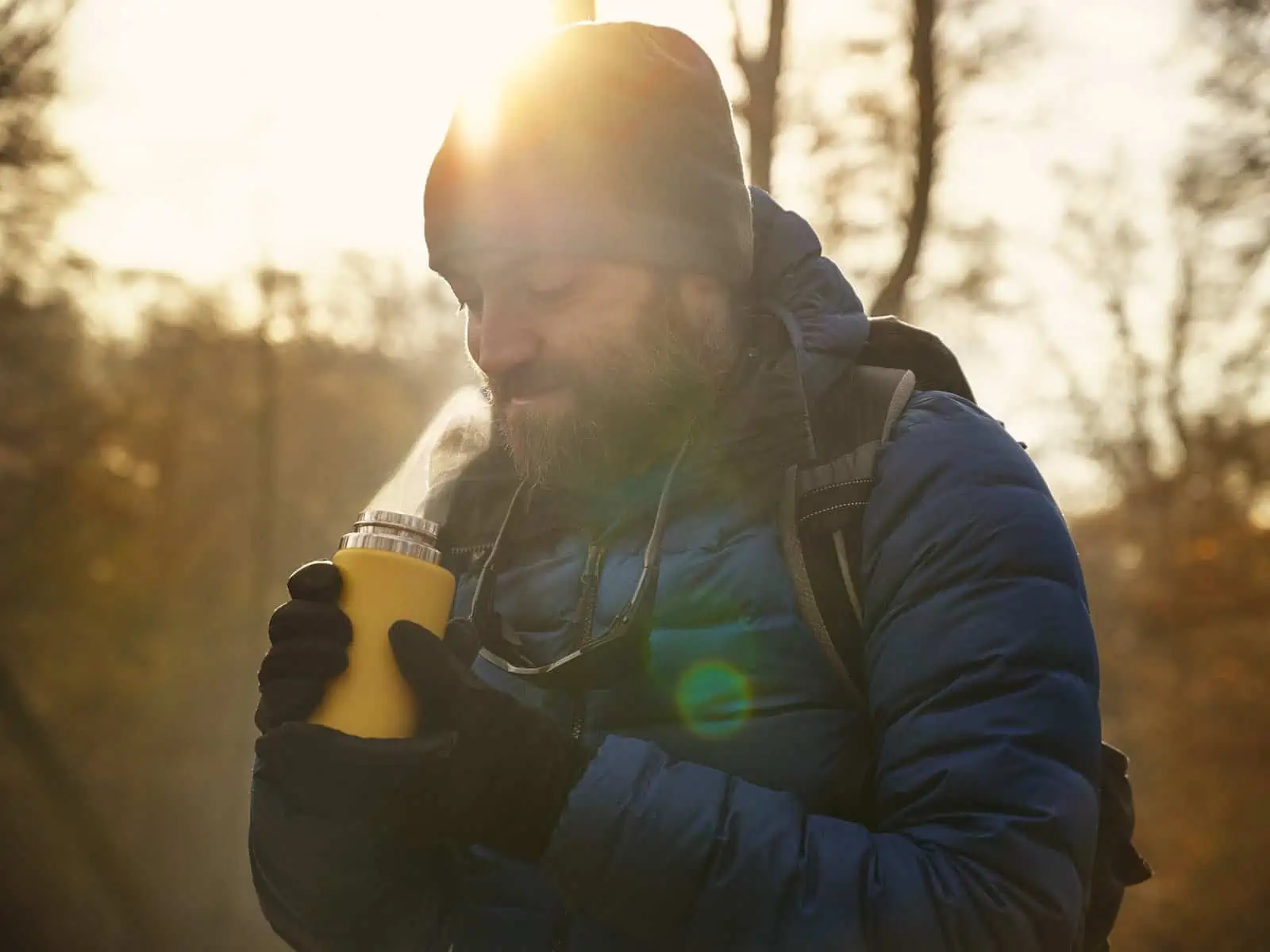Getting outdoors often seems to be associated with long summer days that turn into endless balmy evenings, and the ease that comes from that. However, the reality for many of us where temperatures are far from ideal for a lot of the year, is not that! A lot of the year can be less than perfect, and those notions of long summer evenings couldn’t feel further from reality. It is easy to get into a pattern of not wanting to go outside in the colder months as much. That is totally understandable when you look out the window and see a grey and dull day or feel a crisp breeze drafting through the door as you open it. To help you get outdoors more this winter, we’ve partnered with Outdooractive UK to explore just how beneficial this can be for our overall wellbeing.
Learning to love the outdoors in winter can certainly be a skill – and especially if you live somewhere like the United Kingdom. It’s also pretty clear that whilst the intention behind the age old notion of ‘there’s no such thing as bad weather, just inappropriate gear’ is meant well, it doesn’t really do much to aid people’s enjoyment. We often associate the winter with the incredible scenes we might see on social media of enchanted, snow covered mountains and blue sky, crisp days. Reality is often much different and the idea of stepping out into driving rain with minus level wind chill really does have you questioning that sentiment and asking ‘is this just inappropriate gear, or is there something more going on here?’
We’ve had a love hate relationship with the British winter for as long as we can remember. There is always mud, there is always rain and there almost always seems to be wind at the same time as rain! However, with that said, it can also be absolutely incredible. Sure, the days in winter aren’t always perfect, but each one presents a truly unique landscape. On those days, for example, where you get to see the details of frost on the leaves and the light peering through in a way you only get in winter, you start to really appreciate winter as a season in its own right.
So, if we know that getting outdoors is good for us both mentally and physically, why is it so much harder to get out in winter? In many ways, when it gets cold outside, you’d be forgiven for feeling like you wanted to go into some form of hibernation. There are so many things that can impact us not wanting to get outside in winter. The weather plays a big factor – cold, rain, storms. Darker days can have us feeling more tired and with less energy than we perhaps feel in the warmer months. This can lead to lower moods, especially when we go for prolonged periods of time indoors and potentially creating a greater sense of apathy when it comes to getting outside. There’s also the fact that our routines are exactly that – routines, which are by definition built up over constant repetition. So, if we get out of the habit of getting outdoors as much, it can make it harder when we do. There can also be a whole host of other reasons why getting outdoors in winter can be harder – including potential access issues, safety worries, or health concerns.
Image description: A landscape image. Fay and Matt stand central in the frame, pictured full length. They are looking at a phone with the Outdooractive app running. They are both smiling, It is clearly cold and they are wearing winter clothes.
The benefits of getting outdoors in winter
Staying indoors can be all too tempting, but how can we get past just tolerating being outdoors in the winter to actually wanting to get outside and enjoy it? We believe it’s a case of working out what it can actually do for you, and seeing the benefits first hand. You’ve got to have an incentive.
It can lift your mood
Natural daylight does wonders for increasing your serotonin levels – which is one of your body’s natural feel good chemicals. In winter, natural serotonin levels are at their lowest, so we need to work harder to improve our likelihood of positive moods and reduce the impacts of depression. Getting outside, in daylight (even if it is not sunny) on a winter’s day can also help to improve our alertness and cognitive function.
It can boost your immune system
Exercise can help to flush bacteria out of our lungs and airways, potentially reducing our ability to catch bugs, colds and flu. Getting outdoors can also help to charge up your Vitamin D levels – which can reduce inflammation and improve immune function. Aside from this, maintaining general health through exercise will help with overall wellbeing.
Image description: A landscape image. Fay walks off into a forest of trees with a hazy sun in central frame blowing out the highlights. Fay is pictured from behind, wearing a blue coat, yellow bag and multi colour hat.
It can help you to be mindful
Being outdoors, away from the distractions of emails, calls and texts can help us really reconnect with ourselves, our breathing and the world around us. In winter, we have the opportunity to observe the landscape in a way we maybe haven’t before or haven’t seen in a while. We can focus on the tiny details around us – like how the frosty leaves feel underfoot. Or how the cold air feels on our faces. Disconnecting from the things we experience on a day to day basis can give us that all important time and perspective we need to come to decisions, and just to feel more in the moment and less anxious.
How to build up to confidence to get outside more in winter
Here are six important aspects to consider and try to help make the experience of getting outdoors in winter part of your routine, and more enjoyable.
Do smaller
If winter isn’t generally your thing, or you’re curious to give getting out in the winter months more of a go, breaking it down and making it achievable is going to make it that bit more possible. As it’s colder, and sometimes muddier and the weather can turn, it’s advisable to perhaps start with a trail you know well, or shortening something you know is achievable. This will allow you to build up the confidence to explore further. Don’t be surprised if you don’t feel you can go as far in winter as you do in summer. There are so many different factors at play here. If you live in an area that gets a lot of snow in winter – snowshoes, for example, can really slow you down and they can also have a big impact on your energy levels due to the change in how you walk. Muddy ground can often mean we have to put more effort in to cover ground and the cold air can really take it out of you, so you might find you feel tired quicker. Our clothes can often be a lot more restrictive as well, with more layers, which can make moving that bit harder. Meeting yourself without judgement is key here – and instead, being curious to what you get to see and do.
Image description: A landscape image. A close up of Fay holding a phone using the Outdooractive map. The colours around – in Fay’s hair and in the leaves on the ground, is golden.
Be prepared
When we remove a lot of the worry around whether we’ve brought the right things with us or not, it means we can actually concentrate on enjoying the experience more. It is important to look at what you need to get outdoors where you live in winter – as this will be different for everyone and how you feel in the cold. Layers are generally key – as are hats and gloves, warm coats and boots. Also think about the little details that can help bring joy to those cold moments – like a flask of something warm to drink. If you’re going to be out for a while, also pay close attention to drinks and snacks, or bulkier food. There are plenty of ways to carry warmed up food that allow you to have something hot on the trail (a personal favourite of ours). It’s also really important to know where you’re going and to have a plan to turn back if the weather gets worse or you feel too far out of your comfort zone. Outdooractive makes it really easy to download your own and other users public routes to a mobile device for use offline and in all locations. Being secure in knowing you have your routes downloaded can really help when it comes to relieving some of the anxiety that can come from exploring in the winter.
Build up slowly
One thing that can be really helpful when it comes to developing a habit for getting outside more in the winter months is building up slowly. Starting off with shorter routes can really help you to get the confidence to get out there, see that it can actually still be fun in less than perfect weather and build up the want to do it more when you see just how much of a benefit it can have. Winter can actually be a great opportunity to try out new routes that we perhaps haven’t thought of before, and even plan our own custom, tailored routes to get in what we want and give us the best of the situation we’re presented with. If you’re looking for some inspiration,click here to head to a previous article with Outdooractive UK all about planning your own routes for unique adventures.
Image description: A portrait image. Matt is pictured small in frame walking through a forest clearing. The light is peering in from the top left. There are trees to either side framing the image. There are also mossy green mounds in the foreground and ferns which have turned dark orange in colour.
Look for smaller mindful things
Winter is a great opportunity to take in the smaller details of life and to see how things change. Frosty days can do incredible things to the look and feel of a place – and this is a great opportunity to see how weather doesn’t need to actually be seen as bad. If we approach things in a mindful way, there can be immense beauty in even the dullest and cloudiest of days. If we really pay attention, we can start to see new season growth appearing, and appreciate the starkness that little bit more.
Get clear on your limits
Whilst there often seems to be this prevailing attitude of hardship for some reason in the outdoors, we believe this is a toxic behavior that often ends in feeling, well, quite frankly, miserable. The truth is, we all have our limits. If you’re really not enjoying a certain aspect or you just find the prospect of getting outside when the rain is driving down too much to deal with, then that is absolutely fine. It is also perfectly normal for what you feel like doing to change day to day, week to week and month to month. This can be related to so many different things – for example if you’ve been feeling unwell for a few days, the idea of getting out in the cold might just be too much. The outdoors doesn’t need to be this huge epic thing all the time – and even if you just feel like keeping things more local and checking out somewhere a bit closer to home, it is just as valid an adventure. It’s about getting out and enjoying it, without judgement, and making it a unique experience to you – custom fit to your needs.
Image description: A landscape image. Matt stands slightly to the side breathing in vapour from a hot flask of liquid. He is backlit.
Keep an eye on how you feel before and after
When we find it tough to do something, it can be really helpful to build up evidence as to why it’s a good idea. Essentially, we’re looking to build up a whole range of cases as to ‘what’s in it for me’. Keep an eye on how you feel before you head out in the winter months, versus how you feel when you get back. A really simple way to do this is to rate your mood on a scale of 1-10 (1 being low, 10 being positive and upbeat) before and afterwards. It’s a great idea to keep a note of this somewhere so you can start to see if there is a pattern, and if there are any particular times or scenarios where this is vastly improved. Remember, though, that sometimes we don’t really see an immediate improvement, and that is ok. Sometimes, that is just the way it is and how we feel!







